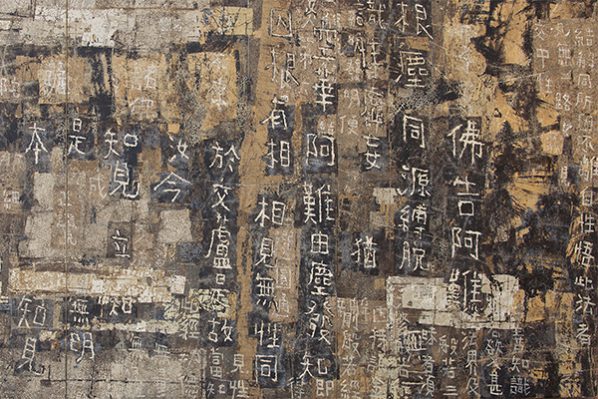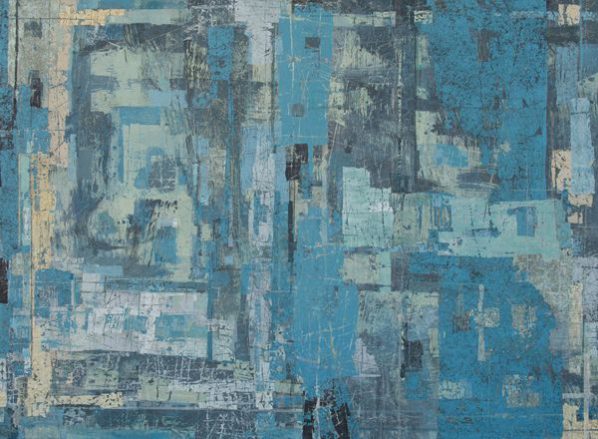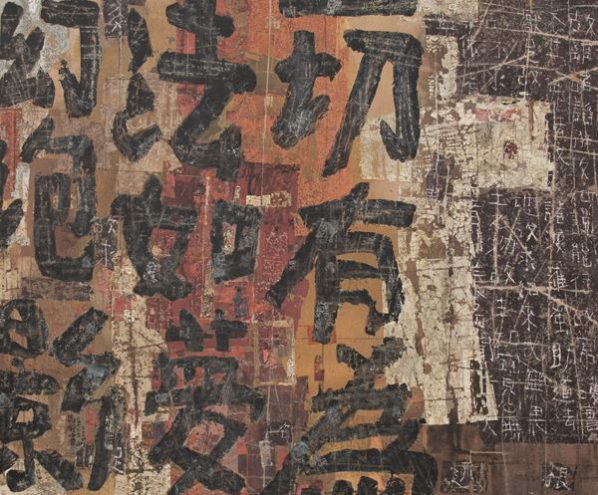
Asia Art Center is proud to announce the opening of “The Eternal Abstract: Fong Chung-Ray Solo Exhibition” on January 14, 2017. This exhibition will be at Asia Art Center Taipei I and Taipei II to show Fong Chung-Ray’s 35 pieces, dating from 1966 to 2016. And it will be Fong Chung-Ray’s largest solo exhibition in Taiwan in scale. The opening reception will be at 4 p.m. on January 14, 2017, Saturday, at Asia Art Center Taipei I. On the same time will also see the Art Talk “Zeitgeist: Sharing Insights with Fong Chung-Ray” in which Professor Shen Kuiyi (Department of Visual Arts, University of California, San Diego) and Professor Julia Andrews (Department of History of Art, Ohio State University) will carry on an conversation with the artist. This exhibition will continue through February 26, 2017.
Fong Chung-Ray, aged 83 this year, was born in Henan and grown up in Taiwan. He has been living in San Francisco for more than 40 years. In the end 1950s he started his art revolution with abstract ink painting; in recent years his works have reached a powerful thickness that recorded life experience. This solo exhibition is an extension of the 2016 group exhibition “1960 – The Origin of Taiwan’s Modern Art”, also at Asia Art Center, and it is the presentation of Fong Chung-Ray’s artistic creation for more than 50 years. It enables an examination of Fong Chung-Ray’s decisive role in the epoch when diverse Taiwanese painting groups bloomed as well as a study of his artistic evolution until today.

Fong Chung-Ray, 2016-4-15, painting; Acrylic on canvas, 167.5x227.5cm
1960s saw the trend that young Taiwanese artists started founding painting groups. The Fifth Moon Group that Fong Chung-Ray was in was one of the most prestigious art groups. Its members frequently exchanged new insights and ideas, transforming the discussions’ viewpoint from skills to concepts. At that time also witnessed the gradual maturity of post-war modernity in Taiwan. Because of Taiwan’s complicated history and unique location, its modernity was allowed an early start. Therefore, comparing to other Chinese regions, Taiwan’s art development could reach a new atmosphere in just 15 years after the War, faster than any other Chinese parts. “What is modernity” was never an easy question to answer of this generation. Perhaps each one had his own definition. For the Mainlander-artists who travelled across the sea, their mutual experience in life was seeking refuge in Taiwan and learning new art thoughts that came from the United States. We may conclude that “in exile and being nostalgia inspired them the force to resist tradition”. Also, by understanding this we may perceive how zeitgeist could conduct ideas of artists who belonged to that specific generation.
Scrutinizing how artist has interpreted his own time with his own particular way, taking Fong Chung-Ray as example, we found that as early as 1964-75 that he already dared to combine Western abstract painting with traditional ink painting, which is delicate and poetic, to construct a luring and philosophical scene. His art might derive from abstract painting and ink painting, which have their own traditions and forms, but he had gone beyond borders and created another realm. The paint brush he uses is self-made with palm leaves. From 1967, he added acrylic to ink in order to change the finish; in 1975 he started to use canvas; in mid-1980s he started to use collage as method and from the late 1980s Chinese characters have appeared in his art. After 1990 he began to stamp shapes onto the canvas by acrylic paint that was touched on plastic sheets, in doing so he could enforce the thickness and vivify the fogging and rendering effect, suggesting the maturity of his artist-ship. The words that Fong Chung-Ray wrote on the layered paints are powerful lines, majestic and at the same time innocent. Perhaps, because he had been through traumatic personal and family changes, the sutra in one of his works had witnessed and concluded his fruit of Buddhist path as well as a peaceful reflection on art and on his 80 years of life: “Therefore, you now base your knowledge on awareness and perception; but that is fundamental ignorance. The absence of a view regarding awareness and perception is Nirvana – the true purity of no outflows. How could there be anything else in the midst of it?”

Fong Chung-Ray, 2016-3-24, painting; Acrylic on canvas, 137x166.9cm
Courtesy of the artist and Asia Art Center.
About the exhibition
Dates: Jan 14, 2017 - Feb 26, 2017
Opening: Jan 14, 2017, 16:00, Saturday
Venue: Asia Art Center (Taipei I + Taipei II)
Artist Talk:
| Zeitgeist: Sharing Insights with Fong Chung-Ray Jan. 14 (Sat.) 4pm (No.177, Sec.2, Jianguo S.Rd., Taipei, Taiwan) Speakers: Fong Chung-Ray (Artist)Julia Andrews (Distinguished University Professor, Department of the History of Art, Ohio State University) Shen Kuiyi (Professor, Department of Visual Arts, University of California, San Diego) |




























